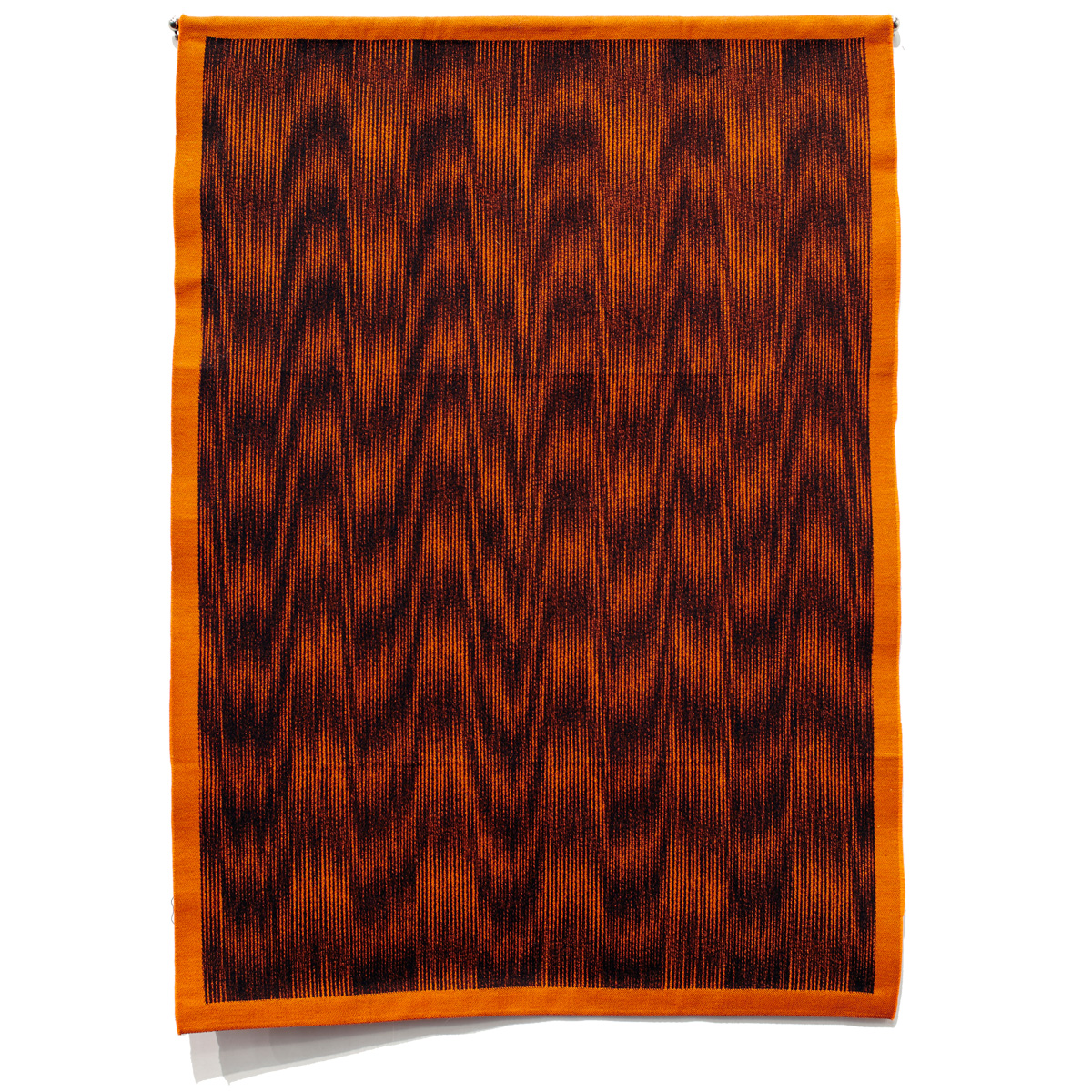CAROLINE KRYZECKI

PORTRAIT_
Caroline Kryzecki’s tool of choice is the ballpoint pen, which she exclusively uses in the four most commonly available colors: blue, black, red and green. To a certain degree Kryzecki’s drawings, or rather paintings on paper (up to 270 x 190 cm), are remnants of analog writing; calligraphy exercises with a ruler that express both the sensuality of an ornament and the meticulousness of a plan drawing. They illustrate conceptual appropriations and variations of an aesthetical practice that emerged originally from an error in production: the moire effect. This effect might occur when a mechanical production process, such as multiple colored halftone printing, runs imperfectly. Caroline Kryzecki turns a digital malfunction into an analog production method and energizes the surface by layering the two grids in a slightly shifted way – the repetition becomes a law of deviation within an algorithmic system. The idea of phase shifting, as known from Steve Reich’s music, is applied here as a moment of visual irritation. The method of construction, however, is more important than the effect and it is documented by the artist, in particular for the more complex grid structures, through a self-developed system of notation, the so-called codes. Despite their abstract character, these autonomous networks always elicit social, psychological and organic dimensions. Caroline Kryzecki found a medium to translate the concrete-constructive art traditions to the present day.
Caroline Kryzecki bevorzugt als Darstellungsmedium den Kugelschreiber, den sie mit den klassischen Kugelschreiberfarben blau, schwarz, rot und grün verwendet. Ihre Zeichnungen oder besser Gemälde auf Papier sind ein Relikt des analogen Schreibens, kalligraphische Übungen mit dem Lineal, welche die Sinnlichkeit des Ornaments genauso zum Ausdruck bringen wie die Akribie einer Planzeichnung. Sie veranschaulichen konzeptuelle Appropriationen und Variationen einer ästhetischen Praxis, die ursprünglich aus einem Produktionsfehler hervorging, dem Moiré-Effekt. Caroline Kryzecki macht eine digitale Fehlfunktion zu einer analogen Produktionsmethodik und dynamisiert die Oberfläche, indem sie zwei Raster verschoben übereinanderlegt – die Wiederholung wird zum Prinzip der Abweichung innerhalb eines algorithmischen Systems. Die Idee der Phasenverschiebung, die man aus der Musik von Steve Reich kennt, wird als Moment der visuellen Irritation eingesetzt. So entstehen autonome Netzwerke, die trotz ihres abstrakten Charakters stets soziale, psychologische und organische Dimensionen evozieren. Ihre bis zu 270 x 190 cm großen Zeichnungen transformiert Kryzecki auch in monumentale ortsspezifische Raumarbeiten, die aus hunderten von Siebdrucken bestehen. Caroline Kryzecki lebt und arbeitet in Berlin. Ihre Arbeiten werden weltweit ausgestellt.
